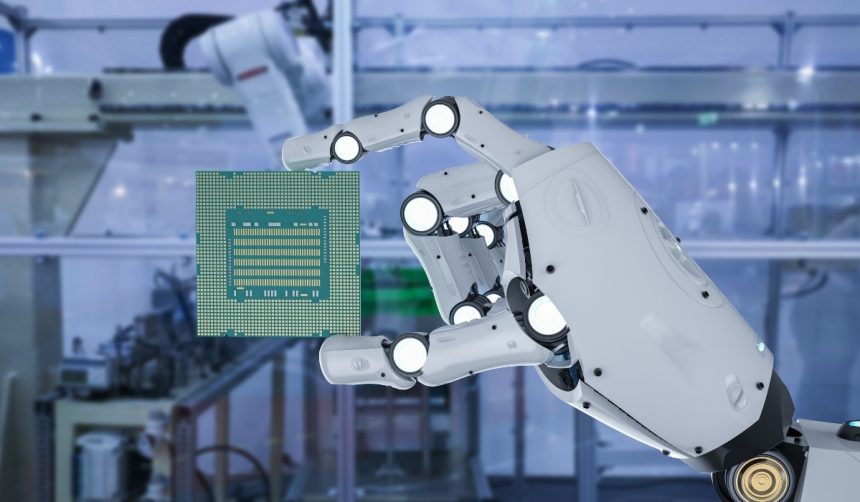Industrial automation often faces challenges of motor efficiency, signal clarity, and cost-effective integration—especially as collaborative robots, or cobots, gain traction in modern factories. QPT’s introduction of the MicroDyno platform brings a new approach to addressing these needs within the robotics sector. This device concentrates on leveraging high-frequency GaN motor drives, signaling a shift from traditional pulse-width modulation methods. With operational precision and built-in diagnostic intelligence, MicroDyno targets smoother motion and reliability in robotic joints and actuators. This development draws attention across not just robotics manufacturers but also system integrators who prioritize both technical performance and accessible deployment in their workflow.
Other motor drive evaluation platforms and robotic drive technologies announced before have typically operated at lower frequencies and required complex external filtering and shielding to address electromagnetic interference. Many earlier systems needed additional external sensors and expensive encoders to handle torque ripple and dynamic disturbances, which complicated both cost management and maintenance for users. MicroDyno sets itself apart by condensing much of this functionality into its architecture, allowing reduced external hardware and promising higher signal purity. This contrasts noticeably with prior solutions that struggled to combine compact size with high-fidelity sensing, particularly for cobots operating in confined spaces.
How Does MicroDyno’s High-Frequency Advantage Improve Robot Motors?
Operating at 1 MHz switching speed, the MicroDyno platform utilizes Gallium Nitride (GaN) transistors to extract superior performance from electric motors. With this design, engineers minimize the size and cost of the output filter, directly providing a clean sine wave at motor terminals. This leads to reduced electromagnetic interference (EMI), suppressed bearing currents, and the possibility of deploying unshielded cabling—all of which simplify integration in collaborative robotics and general automation setups.
What Are the Integrated Diagnostic Capabilities of MicroDyno?
MicroDyno features the proprietary qSense technology, which continuously monitors both voltage and current, detecting disturbances in real time across time and frequency domains. This level of monitoring creates opportunities for advanced predictive maintenance and accurate torque control, all achieved without the need for supplemental external sensors. QPT states,
“MicroDyno delivers advanced torque ripple correction and high-fidelity sensorless monitoring right out of the box,”
and emphasizes that this supports predictive diagnostics for operators maintaining entire fleets of robots.
How Does MicroDyno Address Cost and Integration Challenges?
The integration of qControl allows the MicroDyno to generate high-resolution sine wave control signals, targeted at enhancing motion smoothness and minimizing system vibration, especially for delicate manufacturing and medical applications. Simpler EMC requirements, elimination of shielded cabling, and fewer total parts streamline both system assembly and maintenance. According to QPT,
“By removing the need for costly sensors and providing true sine voltage output, MicroDyno significantly lowers both development and operating costs,”
pointing to tangible benefits for original equipment manufacturers and end users as robotics adoption scales up.
MicroDyno’s scalability also means its technology is applicable to higher voltage powertrain architectures, such as those found in electric vehicles and industrial automation lines. The qAttach packaging standard allows its advantages to carry over to larger installations without dramatically increasing design complexity. This situates the platform as a versatile candidate for a wide gamut of motor-driven systems, from smaller cobots to industrial-scale machinery.
MicroDyno highlights a trend toward integrating software-based diagnostics and local AI solutions at the motor drive level, rather than relying solely on central processing or distributed sensor arrays. As manufacturing and robotics industries move toward higher automation density, platforms able to offer increased reliability, reduced bill of materials, and actionable diagnostic feedback stand to be adopted more widely. Engineers evaluating such systems should assess the compatibility of high-frequency drive solutions with existing shielding, cabling, and safety protocols, and consider the long-term impact of sensorless architectures on overall maintenance workflow. Decision-makers focusing on system lifecycle costs could derive added value from integrating technologies that consolidate high performance and low complexity in a single solution.
- MicroDyno provides high-frequency, sensorless motor drive testing for cobots.
- Integration simplifies robotic assembly and lowers overall system costs.
- QPT’s technology supports advanced diagnostics and scalable voltage solutions.










